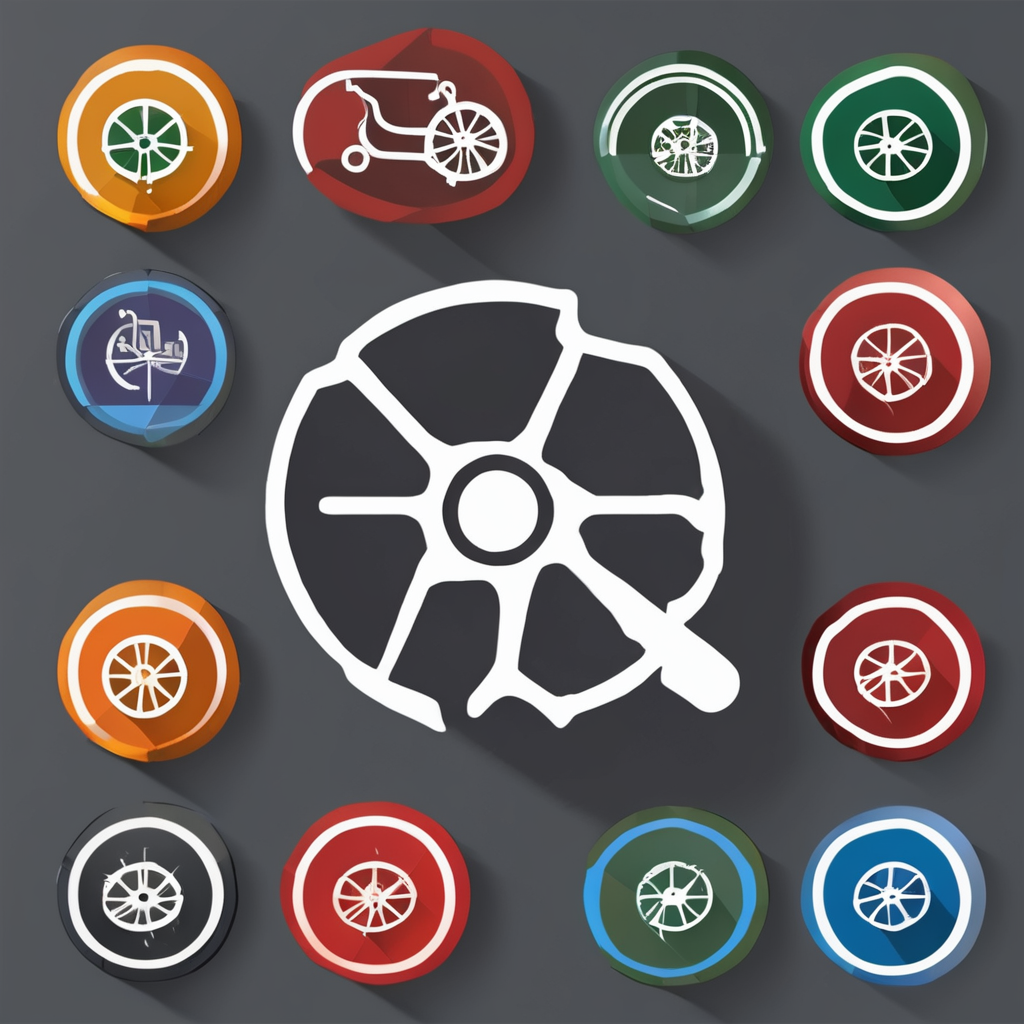Understanding Ride Height and Its Importance
Ride height optimization plays a pivotal role in vehicle dynamics, especially for British sports cars. It refers to the distance between the car’s underbody and the ground, affecting how the car interacts with the road. Proper understanding of ride height is crucial for ensuring both performance enhancement and aerodynamics.
Achieving optimal ride height directly influences a car’s performance. For British sports cars, known for their agility and speed, maintaining the right ride height is essential. It helps in balancing weight distribution, which in turn, impacts acceleration, braking, and cornering capabilities. Furthermore, ideal ride height can significantly lower the centre of gravity, which is vital for improved road grip and handling precision.
This might interest you : Maximize your racing edge: pro strategies for optimizing gear ratios in british racing cars
There’s a strong connection between ride height and aerodynamics. Lowering the ride height generally reduces air resistance, enhancing speed and fuel efficiency. This reduction in aerodynamic drag allows for smoother airflow under the vehicle, contributing to faster lap times and improved efficiency.
In summary, precise ride height optimization fosters enhanced vehicle performance, stability, and aerodynamics, which are imperative for any driving enthusiast aiming to maximize their vehicle’s potential.
Have you seen this : Unlocking range potential: innovative aerodynamic strategies for british electric vehicles
Benefits of Optimized Ride Height
Adopting proper ride height offers an array of advantages for any vehicle, elevating its functionality and aerodynamics. Primarily, an optimized ride height significantly boosts vehicle stability and control. This ensures the car remains balanced and responsive, even at high speeds or during tight corners. The correct ride height allows for precise tuning of the suspension system, maximizing the contact patch stability of tyres and enhancing overall road grip.
Moreover, lowering the ride height efficiently reduces aerodynamic drag, a crucial factor for speed enthusiasts aiming for fuel efficiency and improved performance. By reducing drag, air flows smoothly under the vehicle, decreasing turbulence and increasing the car’s top speed capabilities. The car’s silhouette becomes more streamlined, directly impacting acceleration and lap time reduction.
Furthermore, the vehicle’s core mechanics also benefit. With enhanced tyre performance, drivers experience a marked improvement in how the car handles, especially when executing crucial manoeuvres like sharp turns or sudden braking. Stability in these scenarios ensures safety and confidence on the road. Therefore, achieving the right ride height does more than just enhance a vehicle’s aesthetic appearance — it fundamentally transforms the driving experience, combining efficiency with power.
Tools and Equipment Needed for Adjustment
Adjusting ride height requires specialised tools and knowledge of your car’s suspension tuning. Accurate measurement tools, including scales, laser levels, and measuring tapes, are essential for assessing the current ride height. These tools ensure precision, crucial for enhancing vehicle performance.
Understanding the suspension elements is vital. Key components, such as coilovers, springs, and shock absorbers, determine the ride height adjustment. Coilovers, adjustable for height and damping, offer versatile tuning options. Springs impact both ride height and handling, while shock absorbers influence comfort and control.
Safety equipment is indispensable during adjustments. A reliable set of car jacks and stands secures the vehicle, preventing accidents. Additionally, using gloves and eyewear offers personal safety against unexpected mishaps.
Some may prefer DIY maintenance for cost-effectiveness and personal satisfaction. However, it demands caution and patience. Familiarising yourself with your car’s manual and suspension system is critical before proceeding. Assess the working area, ensuring it’s clean and well-lit. The peace of mind gained by adhering to proper safety procedures and using the right tools is invaluable for both enthusiasts and professionals alike. Adjustments in tight spaces demand alertness—safeguarding you and ensuring optimum results.
Step-by-Step Guide to Adjusting Ride Height
Adjusting ride height is a meticulous process involving various suspension setup procedures to achieve optimal performance tuning. It demands precision and patience to ensure vehicle dynamics are enhanced without compromising safety.
Preliminary Measurements
Start by accurately measuring the current ride height. Use tools like laser levels and measuring tapes to ensure consistency. These initial measurements are crucial before making any adjustments to the suspension components. Secure the vehicle on stands, ensuring stability for accurate assessments.
Adjusting Suspension Components
Dive into the suspension system to modify components that affect ride height. Components such as coilovers and springs are pivotal in this stage. Adjust coilovers for height and damping according to desired specifications. Alter springs as necessary, considering how they’ll impact both vehicle handling and comfort. Be methodical in every adjustment for seamless ride height alteration.
Final Checks and Testing
Once modifications have been made, perform final checks to verify each adjustment’s accuracy. Inspect all suspension elements to ensure they’re firmly in place. Conduct test drives to assess the new ride height‘s performance effects, focusing on handling and road grip. Evaluate braking and acceleration response to confirm that the adjustments yield desired improvements. Through meticulous testing, the effectiveness of the ride height adjustments can be maximised.
Common Mistakes and Pitfalls
Adjusting ride height can vastly improve a vehicle’s performance if done correctly, but common mistakes may hinder outcomes. Avoid these pitfalls to ensure effective adjustments.
Installation errors often arise from misaligned suspension components. Precise alignment is crucial. Misalignment can lead to poor tyre wear and compromised handling. Always double-check measurements and component placement to sidestep issues.
A prevalent ride height mistake is overlooking the interaction between components. Each part of the suspension system interplays with others. Ignoring how adjustments affect the entire setup can result in performance setbacks. Customise settings for your driving needs while considering overall system dynamics.
Further, a misjudged ride height can disrupt performance optimization. Signs like uneven tyre wear, unusual vibrations, or lacklustre handling are red flags indicating improper settings. Regular inspections and adjustments rectify issues, maintaining safety and performance.
To avoid these pitfalls, focus on comprehensive suspension tuning. Adhering to manufacturer instructions and consulting professionals can prove invaluable. Rectifying previous installation errors involves re-evaluating the system holistically. Precision and attention to detail in every adjustment stage mitigate these common pitfalls, ensuring a smooth transition to an optimised ride height.
Expert Tips for Optimal Performance
Enhancing your vehicle’s ride involves both expert insights and attention to detail, addressing both performance and safety. Here are some valuable tips to guide you.
First, when it comes to performance improvement tips, experts emphasize the importance of regular suspension checks. By inspecting and maintaining key components such as coilovers and springs, you ensure that your ride height remains optimal. This diligence helps to maintain precise handling and stability.
Consider consulting a professional for ride height adjustments. Although DIY maintenance can be rewarding, professional tuning offers tailored precision that may be challenging to achieve at home. Technicians use specialized tools such as laser alignment systems to optimize every element of your car’s suspension. This approach can significantly enhance your driving experience enhancement, particularly for high-performance vehicles like British sports cars.
For sustained performance, incorporate long-term maintenance into your routine. Regularly inspect your vehicle for signs of wear and tear such as uneven tyre wear or diminished handling capabilities. Use professional servicing periodically to detect and rectify any potential issues early.
Lastly, always adhere to manufacturer guidelines for your specific vehicle model. Keeping abreast of the latest expert insights ensures your car benefits from advanced suspension technologies and techniques, securing enduring performance excellence.











